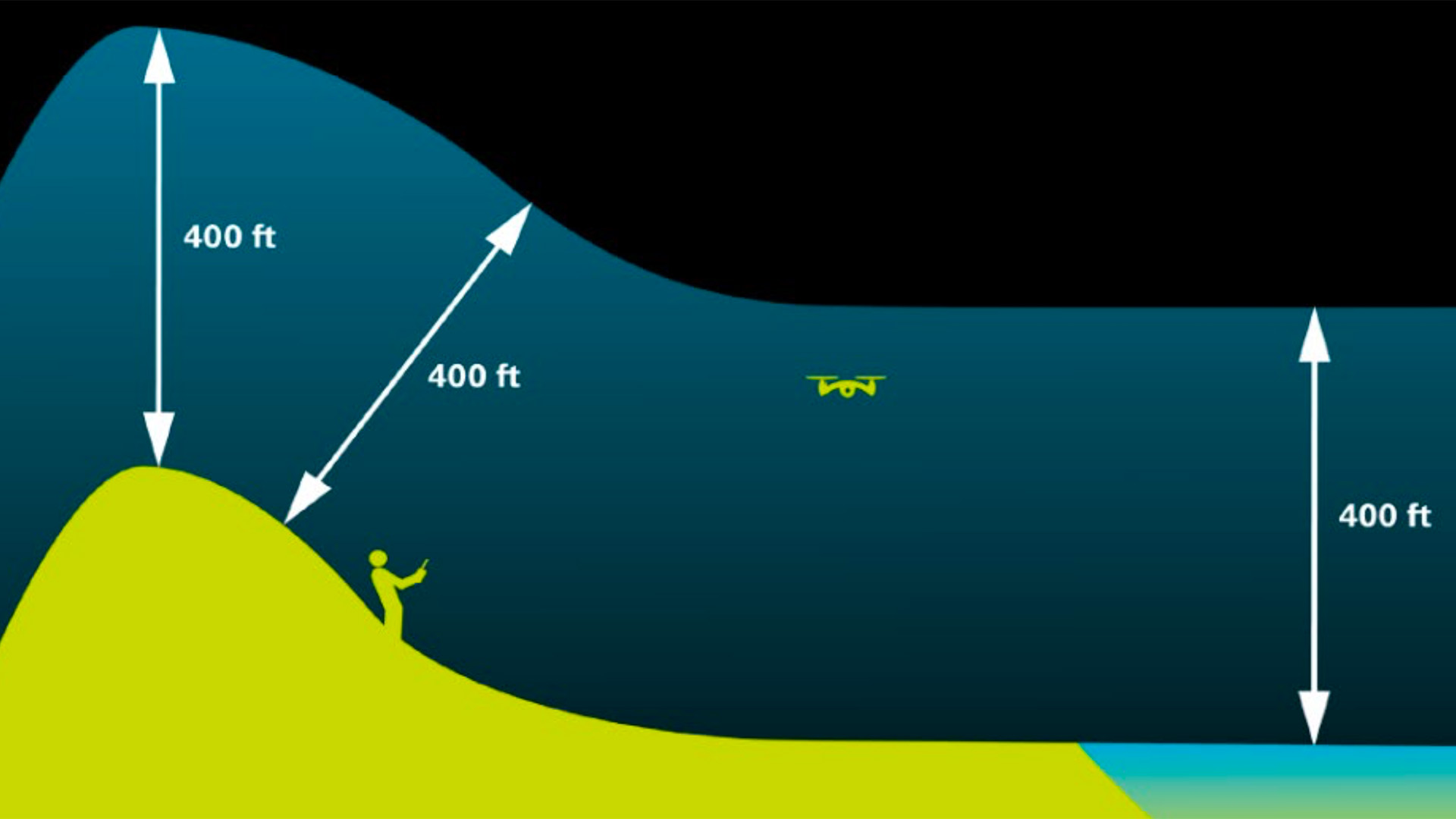Read Time 5 mins
15/01/2024

2. Legal Framework: IR2019/947 and CAP 722
3. Practical Interpretation of the Law
Introduction
There is a common misconception in the drone community regarding the maximum altitude for operating drones in the Open Category. Many believe it to be strictly 120 metres (400 feet) above the take-off point or ground level. However, this interpretation is inaccurate and simplifies the complexities of the actual legal requirements.
Legal Framework: IR2019/947 and CAP 722
The law, as stated in IR2019/947, mandates that for unmanned aircraft systems (UAS) operating from a natural elevation or over varied terrain, the drone must remain within 120 metres of the closest point of the earth's surface. This measurement adapts to the geographical characteristics of the terrain.
CAP 722 further elaborates on this by limiting Open Category operations to a maximum distance of 400 feet (120 metres) from the nearest point on the earth's surface. This is crucially noted not as a 'vertical height' but a distance measurement from the UA to the nearest point on the surface of the earth.
Practical Interpretation of the Law
The legal wording implies that the 120-metre limit is not a simple vertical measurement from the take-off point. Rather, it's a dynamic measurement that changes with the contours and elevations of the terrain around the drone. This interpretation allows for more flexibility and safety in varied geographical landscapes.
Compliance and Safety in Operating Drones Near Tall Structures
In line with the UK's commitment to ensuring the safe and regulated use of unmanned aircraft (UA), the Regulation (EU) 2019/947 under the UAS.OPEN.010 provision offers specific guidance for operating drones around tall structures. This regulation permits drones to ascend up to 15 metres above the peak of an 'artificial obstacle' provided that the structure surpasses 105 metres in height. Importantly, this elevation privilege is contingent upon the drone remaining within a 50-metre radius of the structure. You will require the permsission of the authority responsible for the structure.
Real-World Examples
Consider flying a drone up the side of a mountain. In this scenario, the drone could be more than 120 metres above the take-off point but still remain within the legal limit, as it is within 120 metres of the mountain's surface. Similarly, when flying near a cliff, the drone might be significantly higher than 120 metres above the ground below. However, if it stays within 120 metres of the cliff face, it adheres to the legal requirement.
These examples illustrate the importance of understanding the terrain and maintaining a safe distance from the surface, rather than relying solely on a fixed vertical height from the take-off point.
Safety and Visibility Considerations
While the legal framework provides certain flexibility, drone operators must remember the requirement to maintain Visual Line of Sight (VLOS) with their drone. This often becomes a more limiting factor than the altitude restrictions, especially in complex geographical areas.
Furthermore, the logic behind these regulations is to minimise the risk of conflict with manned aircraft, which are unlikely to fly within 500 feet of the Earth's surface except during take-off and landing. Therefore, adhering to these guidelines significantly enhances safety for both manned and unmanned aircraft.
Conclusion
Understanding the correct interpretation of drone flight altitude regulations in the Open Category is crucial for safe and legal drone operation. It is important to recognise that the 120-metre limit is a dynamic measurement relative to the earth's surface and not a fixed vertical height. By comprehending and adhering to these guidelines, drone operators can ensure safer skies for everyone.